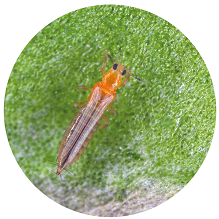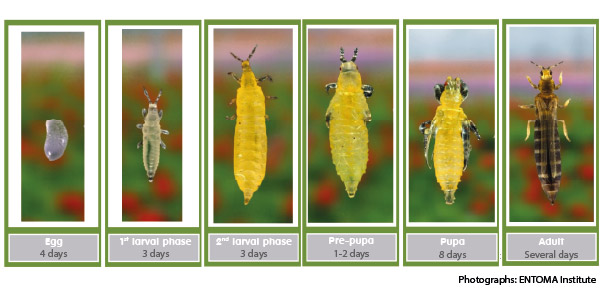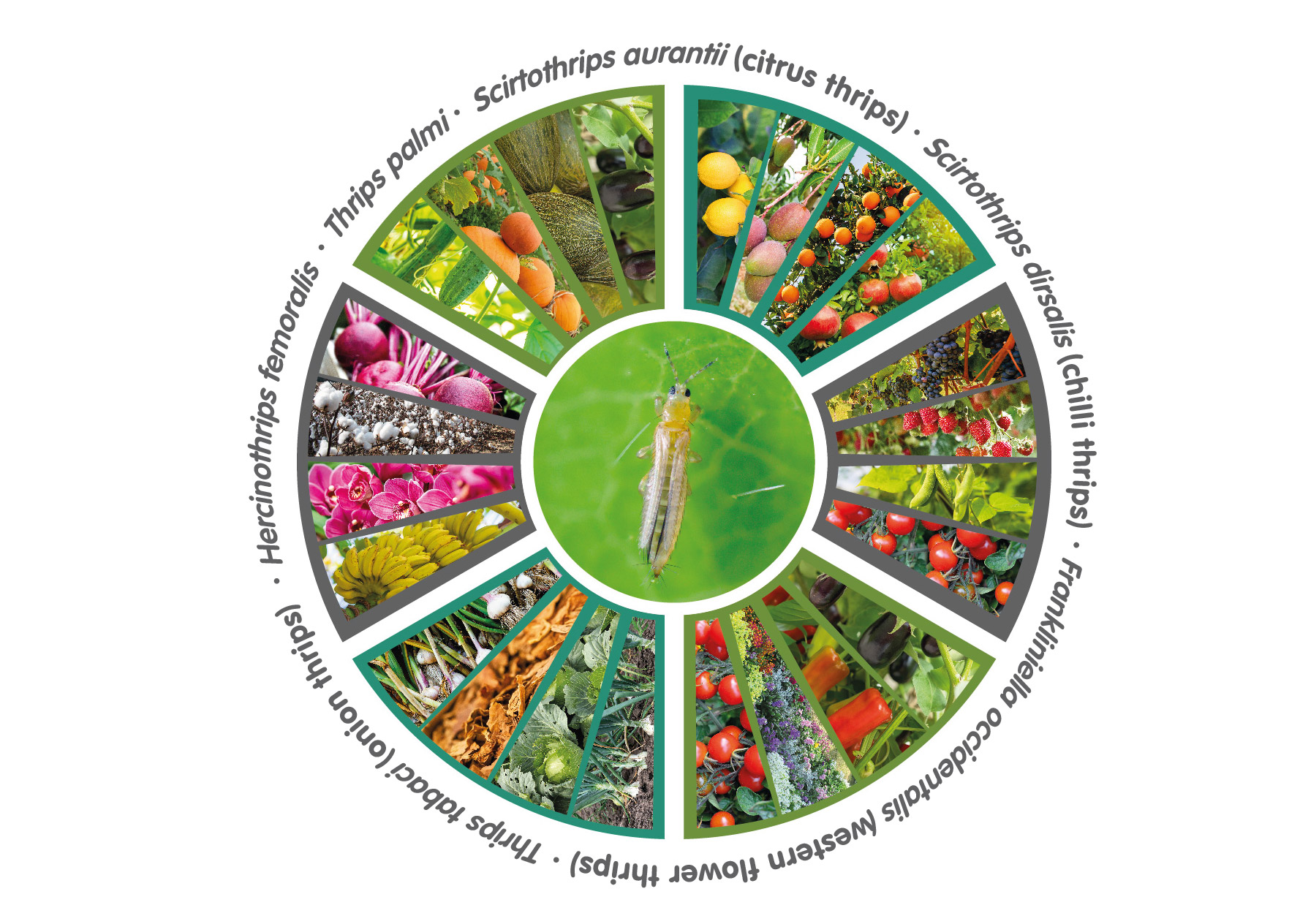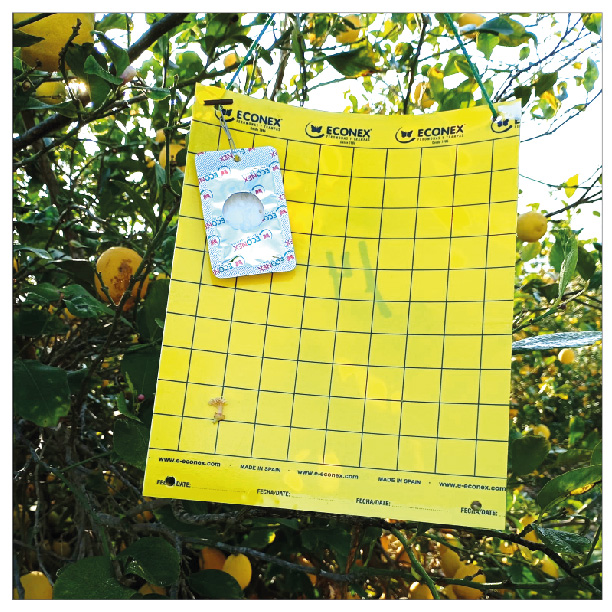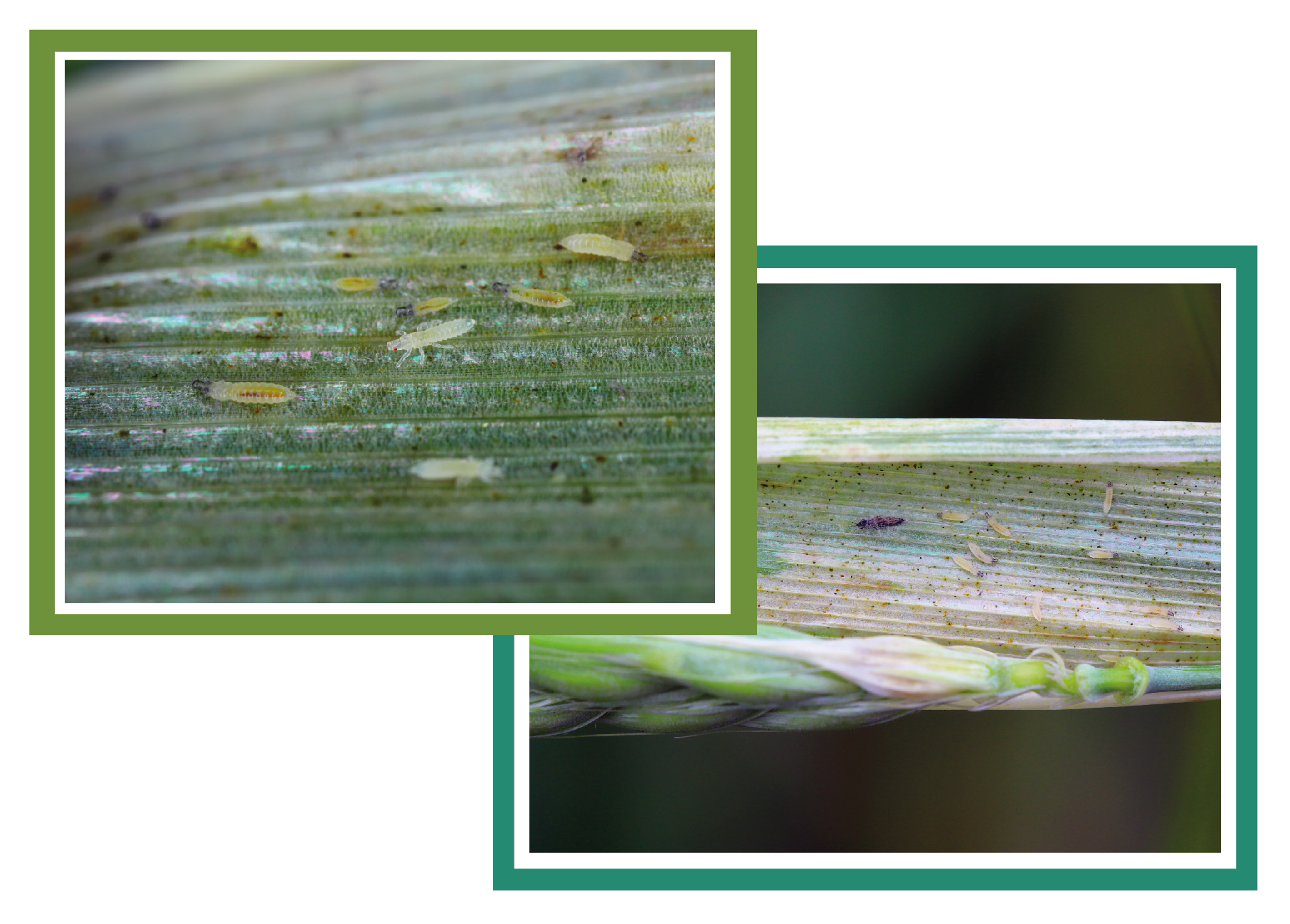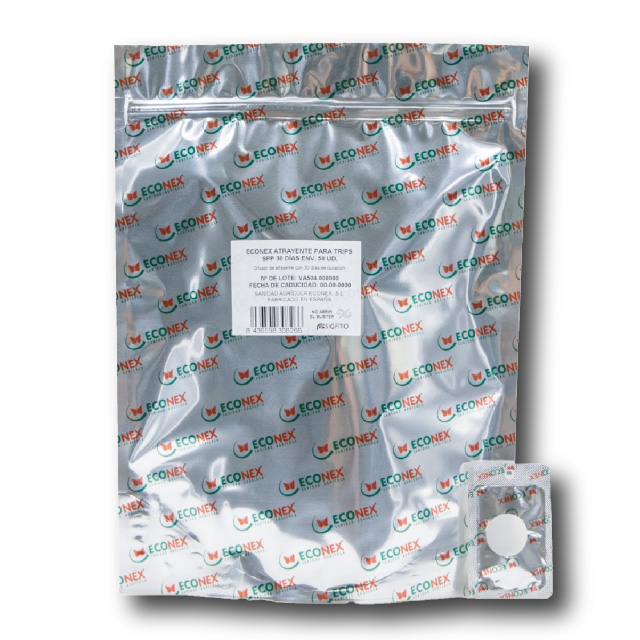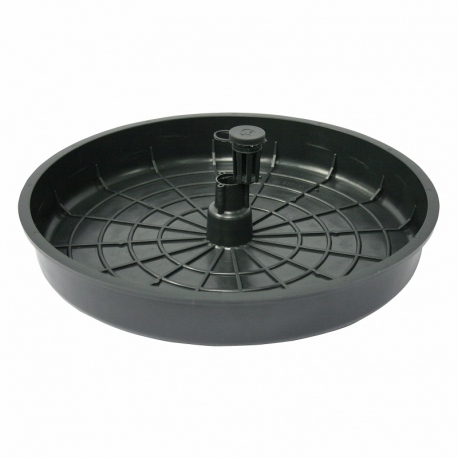Currently, there are more than 6.000 thrips species known to exist worldwide, of which only about 20 species cause agricultural damage from temperate to tropical regions. As the trade in the agricultural sector becomes more globalised, thrips are emerging as one of the fastest spreading pests. Regulating thrips populations can be complicated due to their ability to develop resistance to pesticides and their fast life cycle, allowing them to reproduce rapidly. Thrips biocontrol through the use of pheromones and traps is an effective and sustainable strategy that allows this pest to be managed without resorting to the excessive use of chemicals.
Morphology and biology
Given the wide variety of thrips species that are found, it is difficult to provide an exact description of the insect. In general terms, they measure between 1 and 3 mm and have an elongated and narrow body. Their name alludes to the fringed hairs that emerge from their narrow, fringed wings. Their mouthparts are of the sucking type and are adapted to whether the species is phytophagous, carnivorous, ectoparasitic or mycophagous.
Some of the most important thrips species, according to the damage they cause to crops, are:
Scirtothrips aurantii (citrus thrips):
affects citrus fruits (oranges, lemons, mandarins, grapefruit, etc.), vines, mangoes, pomegranates, among many others.
Scirtothrips dirsalis (chilli thrips): affects crops such as mango, grape, strawberry, bean, tomato and aubergine crops among others.
Frankliniella occidentalis (western flower thrips): found in onion, garlic, leek, cabbage, tobacco, etc
Thrips tabaci (onion thrips): Found in onions, garlic, leeks, cabbages, tobacco, etc.
Hercinothrips femoralis: Frequent in bananas, orchids, other tropical crops, etc.
Thrips palmi: Common in aubergine, melon, cucumber, pumpkin, etc.
